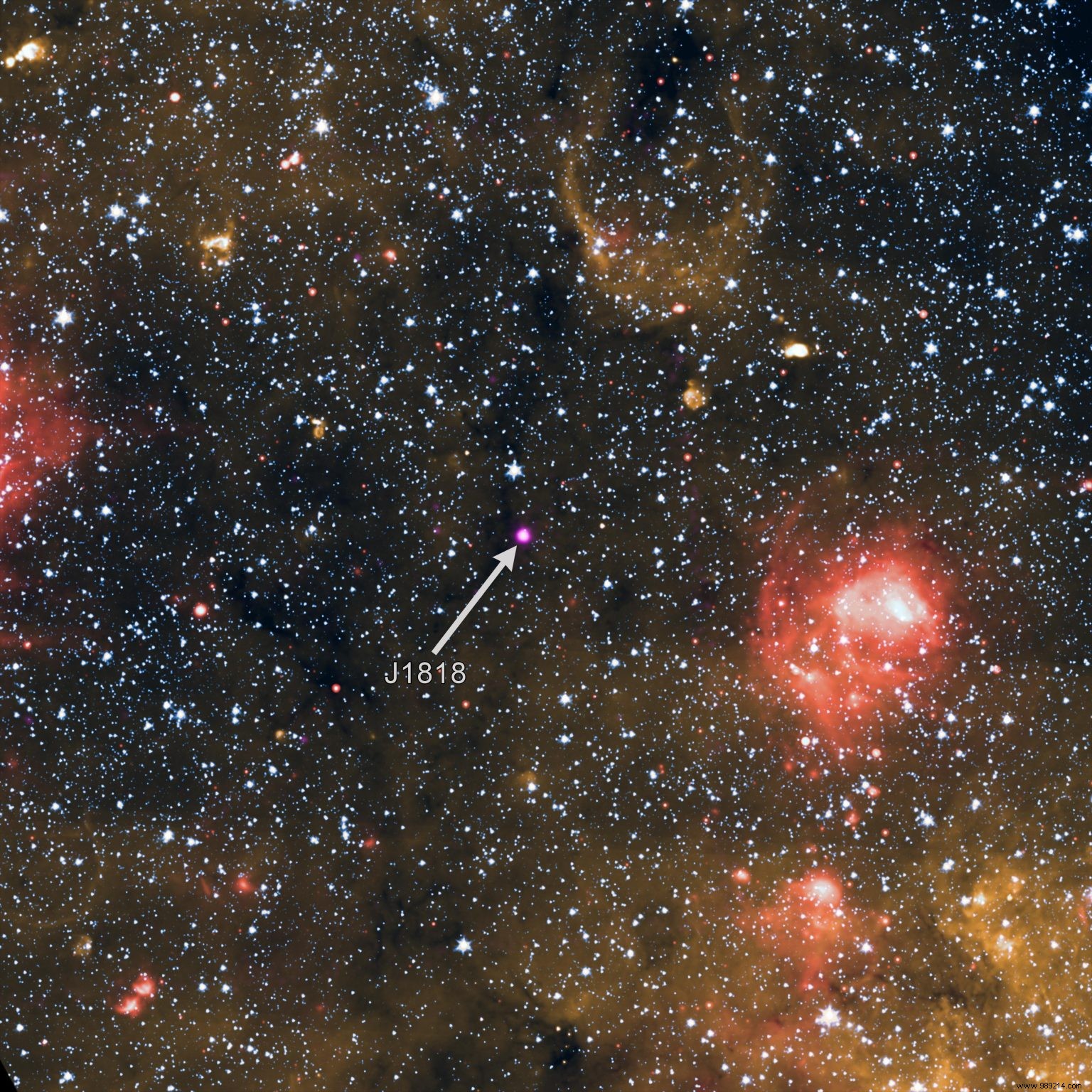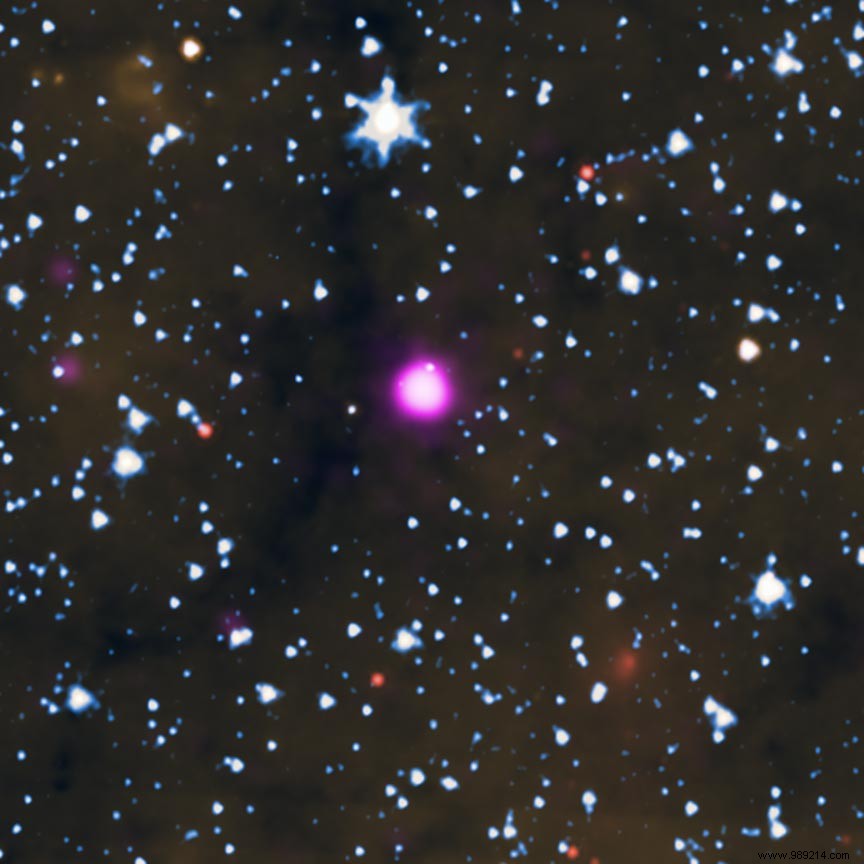Astronomers announce the discovery of a new magnetar 21,000 light years from Earth. Observations made with the Chandra X-ray telescope support the idea that it is also a pulsar. Details of the study are published in The Astrophysical Journal Letters.
A neutron star forms when the core of a massive star nearing the end of its life collapses under the effect of gravity during a supernova. You then obtain a small object of a few kilometers in diameter whose density is of the order of a billion tons, composed almost entirely of neutrons tight against each other.
Some of these ultra-concentrated collapsed nuclei spin very rapidly on their own, projecting very intense beams of radiation into space. If they are visible from Earth, then we have the impression of seeing the neutron star "pulsating", like a beacon in the night. Astronomers then speak of a "pulsar" .
Other of these neutron stars also exhibit very strong magnetic fields (the strongest in the universe). In this specific case, astronomers speak this time of "magnetars". To get the idea a bit, note that a refrigerator magnet has an intensity of about 100 Gauss. Magnetars have magnetic fields of around one million billion Gauss .
On March 12, 2020, astronomers detected a new magnetar located near the plane of the Milky Way, about 21,000 light-years away from Earth using NASA's Neil Gehrels Swift Telescope. It is only the 31st known magnetar, out of some 3,000 neutron stars recorded to date. Follow-up observations later revealed that this object named J1818.0-1607 was special for several reasons.
On the one hand, it could be the youngest known magnetar with an estimated age of about 500 years. On the other hand, it turns on itself faster than any object of this kind previously discovered (once every 1.4 seconds).


Observations made by the X-ray observatory Chandra suggest that J1818.0-1607 is also a pulsar, meaning it emits regular pulses of radio waves. Only five magnetars including this one have been shown to act as pulsars, constituting less than 0.2% of the known population of neutron stars.